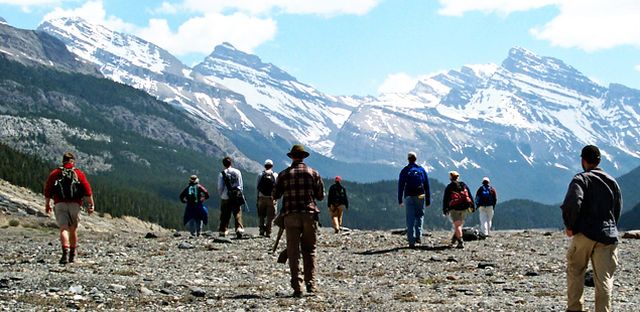
Geology Faculty Publications
Document Type
Article
Publication Date
9-2009
Publication Source
Scientific Drilling
Abstract
Understanding the evolution of humans and our close relatives is one of the enduring scientific issues of modern times. Since the time of Charles Darwin, scientists have speculated on how and when we evolved and what conditions drove this evolutionary story. The detective work required to address these questions is necessarily interdisciplinary, involving research in anthropology, archaeology, human genetics and genomics, and the earth sciences. In addition to the difficult tasks of finding, describing, and interpreting hominin fossils (the taxonomic tribe which includes Homo sapiens and our close fossil relatives from the last 6 Ma), much of modern geological research associated with paleoanthropology involves understanding the geochronologic and paleoenvironmental context of those fossils. When were they entombed in the sediments? What were the local and regional climatic conditions that early hominins experienced? How did local (watershed scale) and regional climate processes combine with regional tectonic boundary conditions to influence hominin food resources, foraging patterns, and demography? How and when did these conditions vary from humid to dry, or cool to warm? Can the history of those conditions (Vrba, 1988; Potts, 1996) be related to the evolution, diversification, stasis, or extinction of hominin species?
Inclusive pages
60-65
ISBN/ISSN
1816-8957
Document Version
Published Version
Copyright
Copyright © 2009, by the authors.
Publisher
Copernicus Publications
Volume
8
Peer Reviewed
yes
eCommons Citation
Cohen, Andrew; Arrowsmith, Ramon; Behrensmeyer, Anna K.; Campisano, Christopher; Feibel, Craig; Fisseha, Shimeles; Johnson, Roy; Bedaso, Zelalem; Lockwood, Charles; Mbua, Emma; Olago, Daniel; Potts, Richard; Reed, Kaye; Renaut, Robin; Tiercelin, Jean-Jacques; and Umer, Mohammed, "Understanding Paleoclimate and Human Evolution Through the Hominin Sites and Paleolakes Drilling Project" (2009). Geology Faculty Publications. 51.
https://ecommons.udayton.edu/geo_fac_pub/51
Included in
Geology Commons, Geomorphology Commons, Geophysics and Seismology Commons, Glaciology Commons, Hydrology Commons, Other Environmental Sciences Commons, Paleontology Commons, Sedimentology Commons, Soil Science Commons, Stratigraphy Commons, Tectonics and Structure Commons



Comments
The document is made available for download in compliance with the publisher's policy on self-archiving. Permission documentation is on file. This work is distributed under the Creative Commons Attribution 3.0 License.